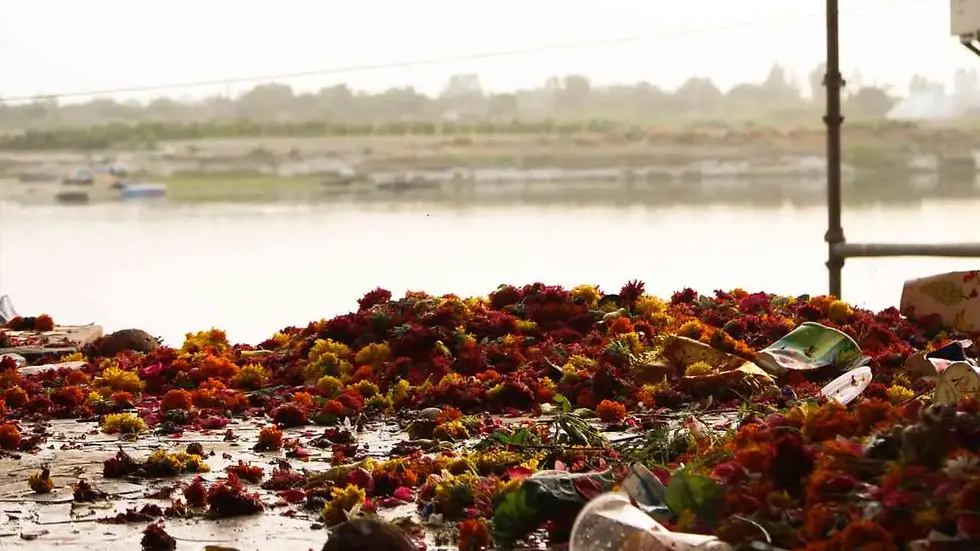Helping you to Choose Sustainably
- ladyjanee16
- 14 hours ago
- 3 min read
Beginning my career change into Floral Design, has truly opened my eyes around purchasing flowers ethically.
I am beginning to realise that 'Sustainable Floristry' is somewhat under the radar. It would seem progress has been made, as I feel we question where our produce comes from, particulary in the world of fruit and veg. However, it seems unusual for us to make the same connection with the cut flowers we place in our homes.
Flowers are joyful, they bring nature inside, they represent beauty in so many forms, but, we still do not appear to think of them in terms of sustainability. How could a product of Mother Nature be harmful? I am hoping to change your thoughts on this by looking at just a few areas involved in the flower industry. I am also hoping to give you a few ideas on just how you can make more sustainable choices and support British Farming.

DID YOU KNOW?...
Only 14% of the flowers sold in the UK are grown here.
A standard bunch of mixed flowers, grown in the UK, has a Carbon Footprint 95% smaller than that consisting of imports.
Flowers are imported from all over the world:
The biggest growers of cut flowers in the world are Ethiopia, Kenya, Ecuador, Columbia and Holland. China are also rapidly expanding their cut flower farms.
All these flowers are flown across the world in refrigerated transport units.
Pesticides and Herbicides:
Working conditions for staff vary across the world, and from grower to grower.
Many growers employ extensive spraying programs of chemicals, which aren't legal in the UK.
There is strong evidence of extreme health issues in farm workers, including birth defects and miscarriages. There is evidence of altered brain activity in children living near flower farms in Ecuador due to pesticide and herbicides being used inappropriately.
A risk assessment of florists conducted in recent years identified that florists were 'exposed regularly' to both a very high number of 'toxic chemicals'.
Resources:
Flowers grown at high altitude in warm countries have a lower carbon footprint than those grown out of season in cooler parts of the world. For example, rose production in heated Dutch greenhouses uses vastly more energy in production than high altitude houses in Kenya or Ecuador.
Water:
Flowers are often grown in areas where water is often a precious commodity and flowers require huge amounts of water. A single rose stem grown in Kenya (where 70% of the UK's cut roses come from) requires 10 litres of water to be produced.
Lakes, rivers and ground water can become toxic around large flower production areas, altering the natural balance of flora and fauna, and displacing many people who made their livelihood in many ways.
Floral Foam (Oasis):
A single use plastic which breaksdown into multiplastics and is made of carbon black, formaldehyde, and phenolic foam. These are known to be toxic to humans and wildlife.
'Eco' foam alternatives have been shown to be more damaging to aquatic life than the original Oasis.
For more information about sustainability please visit www.sustainablefloristry.org
HOW YOU CAN HELP MAKE MORE SUSTAINABLE CHOICES...
Follow these simple steps and you will be well on your way:
Buy local and in-season flowers wherever possible:
This means you are generally...
Selecting fresher flowers which will not have travelled large distances to reach your Floral Designer. You are often purchasing a higher quality product. A flower grown in its natural season produces a stronger, healthier cut stem - a flower with scent, vitality and resilience.
Supporting local businesses and investing in your local economy.
Avoiding additional chemical exposure associated with fumigating and processing imported flowers.
Reducing the carbon footprint associated with transporting flowers long distances, often by airplane.
Purchase a floral design that does not use floral foam:
More sustainable options include:
A hand-tied bouquet to place in a vase.
An arrangement created directly into a reusable water container.
Request simple packaging:
Ask for your flowers to be plastic free - they do not need cellophane wrapping to keep them fresh for their journey.












Comments